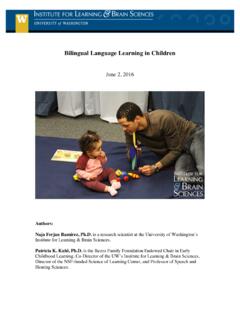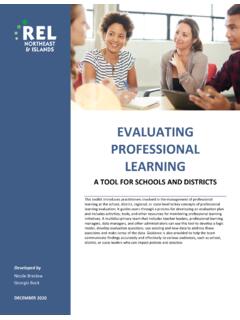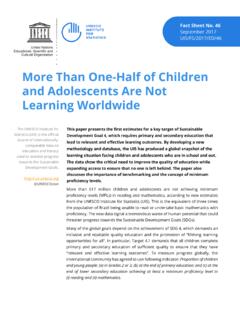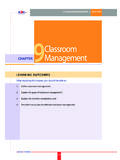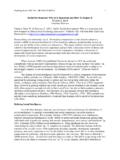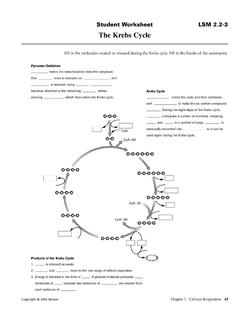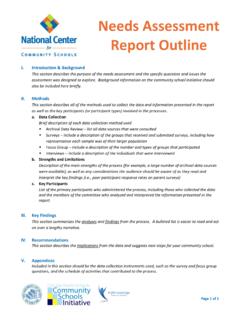Transcription of Students’ experiences of learning in a virtual classroom ...
1 International Journal of Education and Development using Information and Communication Technology (IJEDICT), 2014, Vol. 10, Issue 4, pp. 93-101. Students' experiences of learning in a virtual classroom Dilani S. P. Gedera Waikato institute of Technology, New Zealand ABSTRACT. Online learning environments can offer learners opportunities for flexibility, interaction and collaboration distinctly different from face-to-face learning environments. However, the integration of educational technologies also presents challenges and concerns in relation to students'. learning . This article attempts to develop a better understanding of students' experiences of learning with the specific online learning technology of Adobe Connect virtual classroom .
2 The study was conducted in a university in New Zealand using a case study method. With Activity Theory as its research framework, the research methods of this study include individual interviews, online observation and analysis of other relevant documents. This article includes some of the findings of the research and a discussion on how the synchronous technology . Adobe Connect virtual classroom , used in an online learning environment affected students'. active participation in e- learning activities. The article also offers some suggestions that can be of use to instructors who teach online courses. Keywords: E- learning ; virtual classroom ; synchronous; Activity Theory; learner engagement, ICT, tool mediation, synchronous, affordances.
3 INTRODUCTION. E- learning can be defined as the use of educational technologies to design, deliver, and manage both formal and informal learning and knowledge sharing at any time, any pace and any place. In educational contexts, some e- learning courses are offered fully online without any face-to-face interactions while in some contexts, courses are offered with a blended mode that is the use of both face-to-face and online interactions that are facilitated by educational technologies. Online learning environments can offer learners opportunities for flexibility, interaction and collaboration (Gedera, Williams & Wright, 2013). Also, with the significant growth of e- learning , teachers and students explore new ways of constructing knowledge and enhancing teaching and learning experiences outside the four walls of the classroom .
4 According to New Horizons (2012), 4,600,00 college students in the United States are currently taking at least one of their classes online and by 2014 this number will increase to 18,650,000 (para. 10). In spite of the significant growth and interest in e- learning (Bell & Federman, 2013; Nagel, 2010;. Rivera & Rice, 2002), positive outcomes are not ensured in all contexts (Alexander, 2001). In view of this, some researchers have shown uncertainties about technology transforming teaching and learning (Lee, 2006; Romeo, 2006; University of Washington, 2013) and the pedagogic values of online learning OECD, 2005). In addition, the integration of educational technologies presents challenges and concerns in relation to students' learning .
5 In relation to challenges and uncertainties about technology, the e- learning Advisory Group (2004). accentuate that technology does not offer a complete solution for a transformative education;. rather the practitioners should concentrate on the potentials and uses educational technologies offer individuals to enhance their performance and also the limitations of these technologies that hinder their performance. These potentials and limitations are known as affordances and constraints of technologies in education and they should be thoroughly considered for a 94 IJEDICT. ! successful implementation of e- learning . Focusing on affordances and constraints, this article attempts to develop a better understanding of students' experiences of learning with the specific online learning technology of Adobe Connect virtual classroom .
6 RESEARCH CONTEXT AND RESEARCH QUESTIONS. This course on which this article is based was one of the case studies observed under a larger research project that was carried out in a university in New Zealand. The case study focused on a fully online course that was offered in the first semester of the 2012 academic year. Six students and their lecturer participated in this study. The research question that guided the data analysis of this research was: What are students' views on their experiences of learning with the synchronous Adobe Connect virtual classroom in a fully online university course? ACTIVITY THEORY AS A THEORETICAL FRAMEWORK FOR ANALYSIS. Activity Theory is derived from socio-cultural and socio-historical theories and draws heavily on Vygotsky's concept of mediation.
7 Vygotsky's (1978) triangular model includes tool, subject and object and shows the relationships between these elements. However, this model tended to focus more on individuals. Therefore, sociocultural theorists used Vygotsky's basic mediated triangle as a framework to develop Activity Theory which is accountable for both individual aspects as well as the social nature of activity. Engestr m considered activity systems as object-oriented, mediated and collective in nature. Through activity systems analysis researchers are able to observe the interactions that take place among individuals and the environment and how each affects the other (Yamagata-Lynch 2010).
8 An activity is comprised of elements which together form activity systems, and these systems are meaningful units through which to understand human activity (Kuutti, 1996, p. 25). An activity comprises a variety of mediators such as tools, rules and community and division of labour. These elements in an activity system act as mediators and the relationships between these elements are constantly mediated. For instance, a tool (computer) mediates between the subject (participant) and object (writing an essay), and rules (communication etiquette) mediate between subject (participant) and community (peers). This article attempts to develop an understanding of students' experiences of learning with synchronous educational technology in a fully online university course.
9 In capturing participants'. experiences and views on how the use of this educational technology affected their learning , the tool mediation principle (shown in top triangle) of Activity Theory will be used in the analysis of this article. The following figure is the basic structure of Activity Theory framework that shows the interrelated elements of an activity system. Students' experiences of learning in a virtual classroom 95. ! Figure 1: Basic structure of Activity Theory (adapted from Engestr m 1987). RESEARCH METHODS AND DATA ANALYSIS. This study used a qualitative case study approach and data were gathered over a period of one semester mainly through interviews, observation of online activities (Adobe virtual classroom ) and analysis of other documents (course outline, marking criteria and activity descriptions).
10 The online learning activity was the focus of data gathering in this research. The interviews took place at the beginning and at the end of the semester when the participants were asked semi- structured questions that were related to their experiences of learning with the virtual classroom . In coding the data, relevant meaningful units from transcribed interview texts and observational notes were identified and categorized according to the elements of Activity theory as a method of typology. In this process, Nvivo was used as a data management tool. Based on the research question, with particular attention to the types of tools used in this course, this article draws on the Tool mediation principle of Activity Theory- that is the notion that human activity is mediated by several tools (Kaptelinin 1996).










